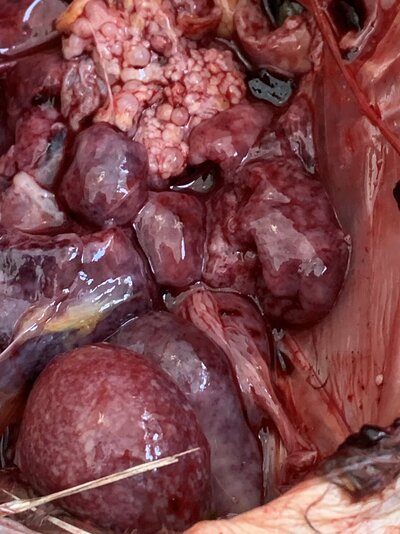- Thread starter
- #11
Araucana Nest
FreeBird
Thank you. I have my lab information and materials to ship it at the ready.I would get a necropsy if you lose the second bird. I would also suspect a cancer-causing virus such as Mareks or lymphoid leukosis. Even with vaccination for Mareks, chick can still get it in the first 2 weeks of life it they are exposed to an environment where Mareks is common. Leukosis is less likely to affect the whole flock as Mareks can. Sorry for your loss.





